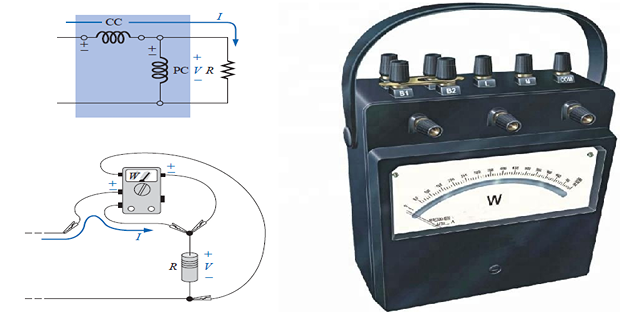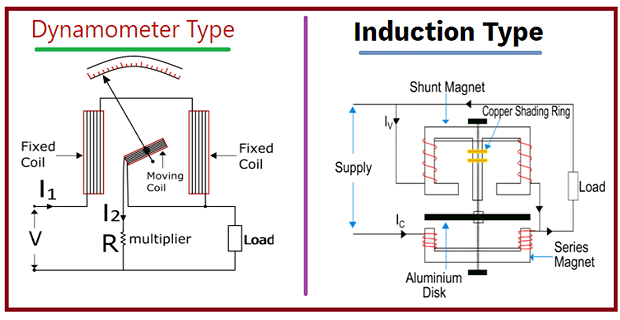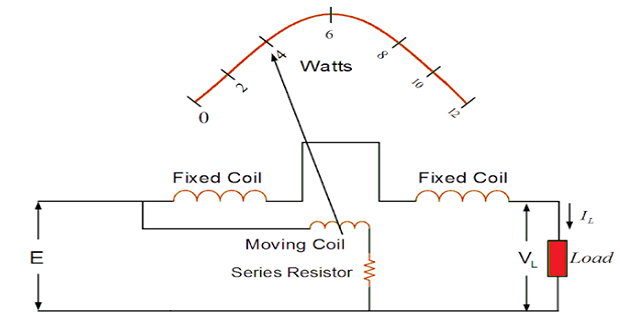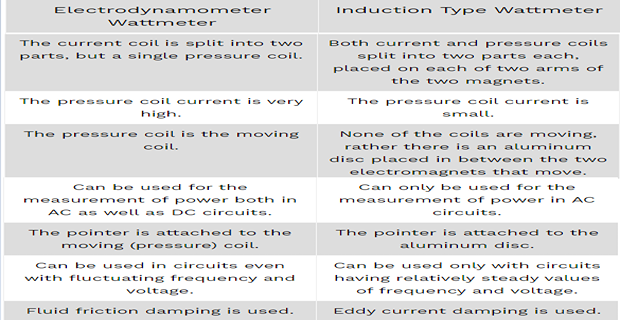Wattmeters for Precise Power Measurement
Demonstrative Video
WATTMETERS
Instrument to measure the power delivered by the source and the dissipating element
Since power is a function of both the current and the voltage levels, four terminals must be connected

If the current coils (CC) and potential coils (PC) of the wattmeter are connected as shown in Fig., there will be an up-scale reading
A reversal of either coil will result in a below-zero indication.
Three voltage terminals may be available on the voltage side to permit a choice of voltage levels.
On most wattmeters, the current terminals are physically larger than the voltage terminals to provide safety and to ensure a solid connection.
Types of Wattmeter
Wattmeters are of two types:
Electrodynamometer wattmeter – for both DC and AC power
Induction wattmeter – for AC power

Electrodynamometer Wattmeter
Field produced by the current-carrying moving coil tries to come in line with the field produced by the current-carrying fixed coil, and a deflecting torque is exerted on the moving system.
As a result, deflection takes place in the pointer.
Fixed coil is splitted into two equal parts, which are placed parallel to each other.

To avoid hysteresis effects fixed coils are air-cored when used on AC.
FC is connected in series with the load and carries the circuit current.
Since CC carry F.L. current, so these are made up of thick wire.
And current flow through them is high, so few turns are sufficient to produce the desired magnetic field.
A high resistance is connected in series with the moving coil to limit the current through it.
By limiting the current, the moving coil is made lightweight, which in turn increases the sensitivity of the instrument.
\[T_d = VI\cos\phi\]

Multiplication factor in LPF wattmeter
LPF wattmeter is an instrument that measures the low value of power factor accurately that’s why it is called low power factor wattmeter.
LPF meter is used to measure power of highly inductive current.
It is also used in resistive current where its pf range is from 0.5- 1.
MF of wattmeter is that parameter of virtue that helps us in finding a small scale wattmeter to get the power readings up to multiplication factor times that are multiplied to the smallest scale possible.
It helps us to measure powers up to 5-6 times the power of wattmeter to get the smallest scale value according to our convenience.
\[\text { M.F. }=\frac{(\text { Voltage range } \times \text { Current range } \times \text { power factor })}{\text { Range of wattmeter scale }}\]